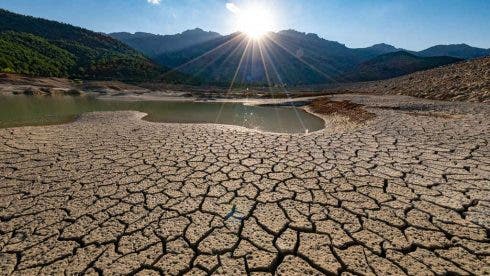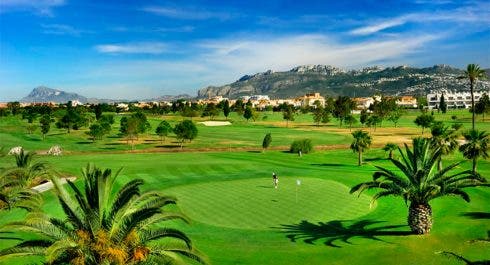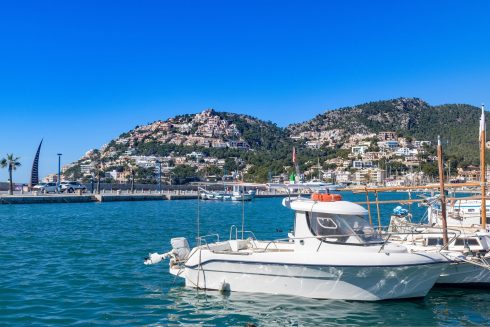TODAY is Andalucia Day, a regional public holiday where Andalucians come together to celebrate the region’s rich culture, history and heritage.
Here are ten fascinating facts about Spain’s southernmost region:
1. Dia de Andalucia, celebrated every year on February 28, commemorates an historic 1980 referendum in which the Andalucian electorate voted to become an autonomous community of Spain.
The decision gave the region its own Parliament and elected president, and granted the region with political autonomy over education, health, environment, policing, culture, social security and economic development.
Andalucia also established its own anthem – The Green and White Flag – flag and capital city, Sevilla.
The region’s coat of arms includes Roman hero Hercules who, according to popular legend, used his superhuman strength to smash the Atlas Mountains in two, creating the Strait of Gibraltar with the Rock of Gibraltar on one side, and Jebel Musa in the Spanish enclave of Ceuta on the other.

2. Andalucia is the birthplace of tapas, the mini-portions of Mediterranean food that typify Spanish gastronomy.
Legend has it that back in the 19th century, Alfonso XIII was travelling through the region when he stopped off at a taverna in Cadiz.
He received a glass of wine with a slice of ham on top, which the bamboozled king was told was used as a cover to keep the wind from blowing dust into his vino.
The king enjoyed the ham so much that he decreed that all tavernas should tapas from that day on – ‘tapa’ literally translates as a ‘cover’ or ‘lid’.

3. Cadiz, the coastal settlement where Alfonso XIII reportedly discovered the joys of tapas, has another claim to fame – it is Europe’s oldest city.
Situated on a narrow slice of land surrounded by the sea, Cadiz was established as a key port by the Phoenicians in the 7th century BC.
Its strategic position, facing out towards the Atlantic, gave Cadiz a virtual monopoly on trade arriving from the Americas until 1778.
Its old town – the Casco Antiguo – preserves many of the landmarks seen centuries beforehand.

4 As Spain’s southernmost region, it may be no surprise to learn that it is also the nation’s hottest.
Renowned for blistering summers that force locals to flock to the coast, temperatures regularly hit blistering highs.
Andalucia holds claim to Spain’s all-time temperature record – a reading of a sizzling 47.6C (117.7F) was made in La Rambla, Cordoba, in the summer of 2021.
Only Italy, thanks to a 48.8C high in Sicily one day beforehand, has seen greater heat on the European continent.

5 Andalucia’s piping hot microclimate is aided by its mountainous geography which acts as a barrier to cold winds coming from the north.
In fact, mountains cover over half of Andalucia’s total surface area, with ranges such as the Sierra Nevada providing some of Spain’s most beautiful scenery.
Mulhacen, based in the aforementioned range, is Spain’s highest mainland mountain at 3,482 metres (11,424 ft).

6 With its year-round warm weather, Andalucia can often make the perfect destination for tourists wanting a beach holiday.
But for those who fancy a sporting adventure, the region is perfect too.
With almost 120 golf courses littered across its eight provinces, Andalucia has the highest concentration of golfing facilities in Europe.
Over half a million tourists travel to the region each year in order to play, making Andalucia Europe’s most visited golf destination.

7 As a cultural heartland, Andalucia has been the breeding ground for dozens of individuals who have gone on to make their mark worldwide.
Famous Andalucians include: actor Antonio Banderas, artists Pablo Picasso and Diego Velazquez, footballers Fernando Hierro and Sergio Ramos, dictator Miguel Primo de Rivera, poet Federico Garcia Lorca, golfer Miguel Angel Jimenez, Ibn Hazm, Maria Zambrano, Bartolome de las Casas and musical duo Los del Rio.

8 Andalucia’s arid, mountainous territory has seen it used in a wide range of movies – including Spaghetti Westerns, the term coined for Western movies filmed in Europe.
The Good, The Bad, The Ugly, directed by Sergio Leone and starring Clint Eastwood, was mostly filmed in Almeria.

9 Do you or any of your relatives enjoy a glass of Sherry, perhaps after Christmas dinner?
If so, you have the Andalucians to thank as the wine is made from white grapes grown near the town of Jerez de la Frontera in the province of Cadiz.
In 1586, British sailor Sir Francis Drake plundered the region, taking thousands of barrels back to England as his prize.
The name Sherry is in fact an anglicised version of the town name ‘Jerez’.

10 As anyone who has ever sat in one of the thousands of tapas bars stretched across Andalucia, the region is famed for its food.
But did you know one of its iconic sights is a leading inspiration for a British delicacy?
Sevilla oranges, notoriously bitter, are the principal ingredient in English marmalade.

READ MORE:
- What shops will open on Andalucia Day in Spain tomorrow? All you need to know
- Revealed: These are the best FREE schools in Spain’s Andalucia – including 5 on the Costa del Sol
- Huge ‘crystal lagoon’ is coming to this major city in Spain’s Andalucia – featuring artificial beaches and water sports









